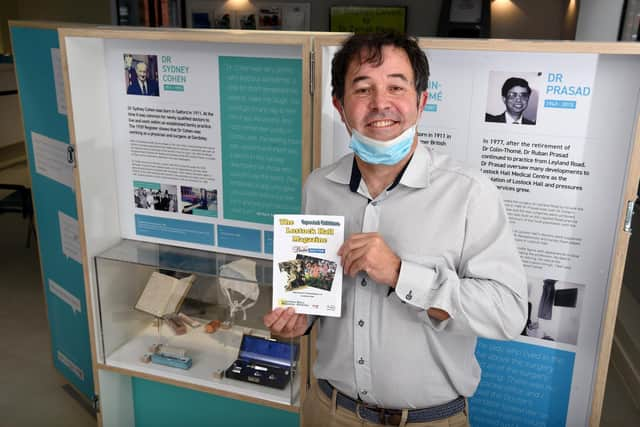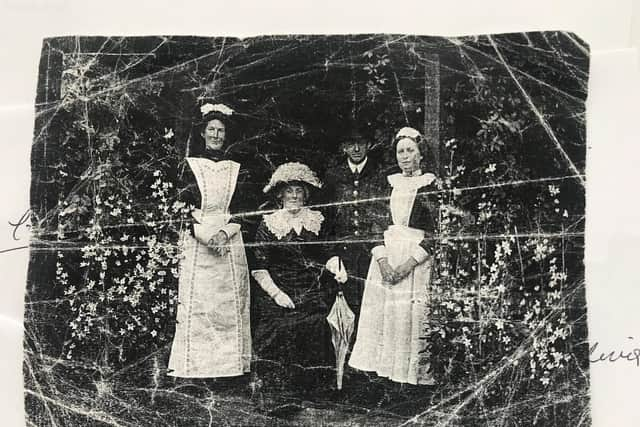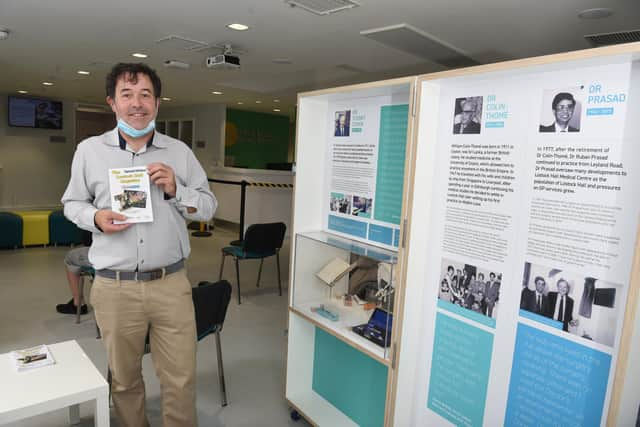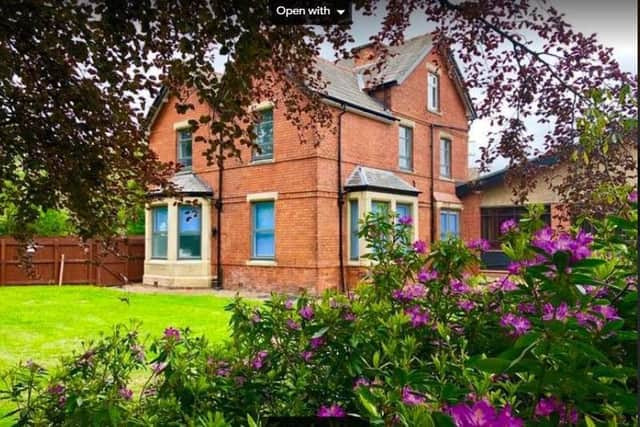Doctor, Doctor exhibition brings past into present at Lostock Hall Medical Centre
and live on Freeview channel 276
Surgery visitors may be used to seeing posters exhorting them to lead healthier lives, get health checks, quit smoking and watch their diet, but at Lostock Hall Medical Centre they get a trip down memory lane too.
The diverting read - photographs and text on the history of the practice's now modernised Victorian building called Dardsley, comprises a pop-up display and many vintage photographs adorning the walls.
Advertisement
Hide AdAdvertisement
Hide AdThese celebrate the rich history of a building which has always played a significant role in local life and has medical connections stretching back to when it was first built.


The displays all form part of the Doctor, Doctor project devised by Practice Manager David Pearson.
It was prompted by the practice's plan to move from a smaller site in Leyland Road to the Dardsley building. The building was purchased in 2017 and the practice, which serves not just Lostock Hall, but south Penwortham Kingsfold, Walton le Dale, Bamber Bridge and Farington, moved in in 2019.
Practice Manager David, who was formerly Deputy Director of the National Football Museum in Preston and then Manchester said: "We thought how can we engage with the local commuity to make them feel this is their building and raise the profile a bit about what we were doing. We were required by the NHS to do a paitient consultation for the relocation to make sure people were happy about it. ..98 per cent thought yes, it was a good thing."
Advertisement
Hide AdAdvertisement
Hide AdHe continued: "It was previously a children's nursery. An 85 year remembered coming to see a doctor here and having his broken leg tied up. A lot of patients remembered it as the Prescription Pricing Bureau and remembered working there themselves and it (the PPB) being an important part of the community until 2008 - a much more recent memory."


Aware that 2018 was the 75th anniversary of the NHS and that much attention was focusing on the origins of the NHS it seemed appropriate to delve deeper.
A Heritage Lottery Fund grant of £40,000 and a partnership with the Lancashire Museums service meant the project could be developed. A project manager and researcher were employed and locals invited to share their stories and memories. Workshops (pre-Covid) were held in local venues such as the library and the local Friendship Centre.
David said: "We established that the plans for Dardsley were registered in 1886 and it was built as the family home and surgery of Dr Thomas Sharples and his wife Agnes and their family."
Advertisement
Hide AdAdvertisement
Hide AdA new pratice was created by Dr Sharples in an area where there would be growing demand for medical care with a large population employed by local mills. David said: "Where the waiting room is was formerly an open courtyard. The horse and trap would come through the courtyard having dropped off the doctor from his visits. There were stables and a little coachhouse at the back of the building."


There were many oral history memories too, for example of when a doctor had a chauffeur and reports that a doctor had killed himself. These anecdotal memories were confirmed by research.
That research also ucovered a spate of letters written by Dr Sharples when his son Sydney, also a doctor, was on active service in World War I with the medical corps, pleading that he be allwowed to come home to attend to patients because he was needed in Lostock Hall. The plea was successful.
Sadly it was also discovered that it was a grief stricken Dr Sharples senior who killed himself in 1923, a week after the death of his wife. David recounted: " A witness at the inquest said he had gone in a taxi round the area that day saying to people he knew goodbye. He came back to the building and told his son he had taken an overdose of morphine and died that day."
Advertisement
Hide AdAdvertisement
Hide AdThe coroner found that Dr Sharples had "taken his own life as a result of being of unsound mind overtaken by grief at the death of his wife."


Dr Sydney took over the practice. He died of cancer in 1948 and the property was then sold by his widow to the NHS and by 1951/2 was the Prescription Pricing Bureau, later known as the Prescription Pricing Authority. Folllowing the sale practice doctor Dr Sydney Cohen set up his own practice locally.
The memories shared also provided a vivid reminder of what life was like when health care had to be paid for and many families could not afford such care. One local resident recalled visiting the building as a youngster in the 1940s and concerns about being able to pay medical bills, with main wage earners away doing war service. The doctor had offered discounts to families of soldiers. Many would have faced the tough decision could they afford to consult a doctor?
Three short films have been created to accompany the project. and more recently a fourth was made bringing the building's history up to date - it featured the Covid vaccination clinics along with a reminder of how previous doctors had to deal with typhoid and smallpox epidemics. A special edition of local publicationThe Lostock Hall magazine has also been devoted to the project's findings.
Advertisement
Hide AdAdvertisement
Hide AdIt is planned that the the pop-up exhibition, which tells the story of five doctors, including a popular doctor Dr Colin-Thomé,who worked in the area up to the 1970s, although not for the practice, will be displayed in other local venues in the future.
For David and all who took part the project has been immensely rewarding - and it's work which keeps on paying dividends, helping attract patient's interest and attention at what can be an anxious time sitting in the waiting room. He said: "People appreciate a practice that's valuing people's stories and their history."
* Watch that space - the practice is now setting up a patient's art gallery in one corner of its building and there are hopes of having an artist in residence in the future.